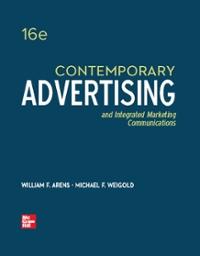Question
Let us consider an economy lasting for three dates, t=0,1,2, and inhabited by two types of utility maximizer consumers. There are a fraction of impatient
Let us consider an economy lasting for three dates, t=0,1,2, and inhabited by two types of utility maximizer consumers. There are a fraction of impatient and a (1- ) fraction of patient consumers. At the time t=0, all consumers are endowed with 1 unit of consumption good (i.e., the numeraire) and are uncertain about their future liquidity needs. Put differently, before time t=1, consumers do not know their types. Agents' preferences over the consumption are represented by the generic utility function U(c1,c2). Individuals do not discount the future so that their ex-ante expected utility is given by U = U(c1) + (1 - )U(c2), where c1 and c2 are the consumption levels in periods 1 and 2, respectively. There are two types of assets. A short-term asset delivering 1 unit of consumption for each unit invested in the previous period or a long-term asset that delivers R>1 units of consumption at time t=2 for each unit invested at time t=0. If liquidated earlier, the latter asset delivers r <1 unit of consumption. The fraction of endowment investment in the short-term asset is denoted by , while (1- ) is the fraction invested in the long-term asset.
Question:
Let us assume financial intermediation. The utility function of early consumers is given by U(c1) = ((1))/(1) while the late consumers' utility is given by the function U(c2) = ((1))/(1). The parameters are such that > 0 and > 1. Find the optimal investment that the bank makes in the short-term asset.
Step by Step Solution
There are 3 Steps involved in it
Step: 1

Get Instant Access to Expert-Tailored Solutions
See step-by-step solutions with expert insights and AI powered tools for academic success
Step: 2

Step: 3

Ace Your Homework with AI
Get the answers you need in no time with our AI-driven, step-by-step assistance
Get Started


